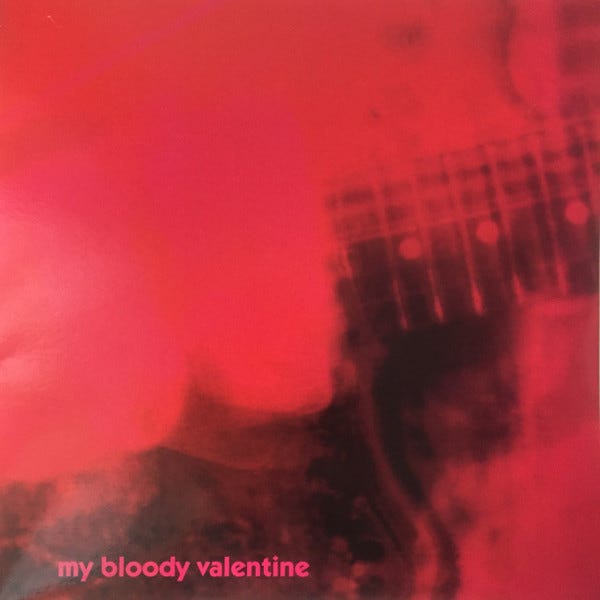There are records that one dances with but keeps their distance. My Bloody Valentine’s Loveless is a very popular album with friends, but also it is considered a masterpiece by people I greatly admire. Some years ago, I purchased the album on CD due to its critical reception, but also a great curiosity on my part to dwell in their world. For one, I admired that this album, to my ears, is an avant-garde piece of work that I had trouble penetrating to its core. Touched, the fifty-seven-second instrumental sounded like a warped record. I hear beauty, but it is covered up by a wall of sound of feedback or guitars filtered through sound devices. The voices are buried in the mix, but both the male and female vocals are dreamy and pretty. I played the CD once and never played it again.
Decades later, I’m still thinking of this album, which I didn’t dislike but also not something perhaps to my taste. Again, I was intrigued about why Loveless is so loved, and is there a method to listen to this album properly? The record label Domino reissued the album in 2022, which is remastered, and “fully analog cut,” which I’m not sure what that exactly means. I know the difference between digital and analog, and generally, the majority of the music sounds better in its analog state. Beyond that, it’s rocket science to me. This is the vinyl copy I wanted, but the prices are expensive, so I found an affordable copy for $30, and unfortunately, it’s a bootleg. Still, how does one know what sounds better than the other when it comes to Loveless?
Experts may disagree, but my boot copy sounds lovely. Listening to it on vinyl (digital or analog?) I discovered one could only subjectively listen to music. There are touches of a Philip Glass/Steve Reich influence, but also the sounds of early Eno, especially his Here Comes The Warm Jets, which also has a distorted and angry guitar sound, and a song like Needles in the Camel’s Eye could be the grandfather of to the MBV sound and aesthetic. Once that connection came upon me, the album opened up to me differently.
The more one listens to Loveless; the more melodies come out of the wall of sound, such as a majestic overture. The interludes between the album tracks also give the work a totality. Nothing is wasted, and the music hits the ears like waves hitting the beach. A pull and push give a sexual gesture perhaps to the listener. It’s a very sexy album, like Fripp and Eno’s (No Pussyfooting,) where if one plays it correctly in a setting, it can make a tremendous make-out record. The lushness of the treated guitars and electronics with the soft-like vocals is seductive without the power of gender politics. If one digs deep enough, you will find pleasure that is very democratic.
My Bloody Valentine is known to play loud when in concert, and playing this album with the volume up is hypnotic and pulls the listener into its swill of sounds. When I play the album with a low volume, such as listening to it on the computer, the textures are very much separated, and one can hear how the puzzle is put together. Loveless is an object that seems to have a life of its own. So far, I hear different things every time I play the music. In that sense, there is a bit of the Pet Sounds/Smile era of The Beach Boys in that Brian Wilson’s music has that Bach-like effect of layering melodies on top of each other.
Both guitarist Kevin Shields and the drummer Colm Ò Ciosòig play a sample keyboard, and I hear a violin (Soon) and sometimes a mellotron, but one is in a hypnotic state of mind. One is not sure what they’re hearing. It's a cabbalistic affair with the additional talent of bassist Debbie Googe and singer/guitarist Bilinda Butcher.




I was lucky enough to see them at a small venue in San Francisco when Loveless was first released! It was a magical night and my friend and I partied with them into the night!!!
A friend introduced me to it when it was new, and I really adore it. I live in the avant-garde most of the time, so that is a feature of the album, not a bug.